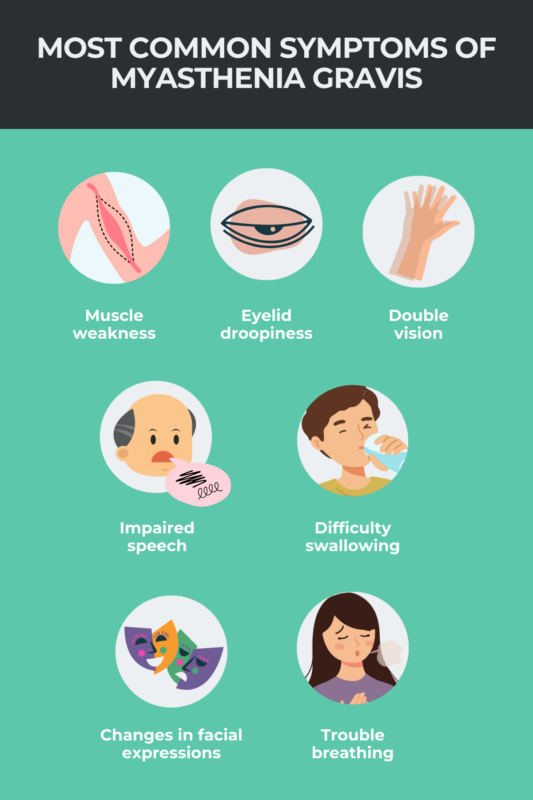
FAQs about symptoms of myasthenia gravis
Muscle weakness in myasthenia gravis can manifest as unexpected difficulty with regular muscle movements, such as climbing stairs, lifting an object, moving the eyes, or smiling, depending on the muscles that are affected. A person also may feel they get tired faster than usual when performing these activities.
For most people, early signs and symptoms of myasthenia gravis are related to weakness in the muscles of the eyes and eyelids and include problems with eye movement, droopy eyes, or double vision. Symptoms affecting muscles in the face, neck, and throat are among the earliest issues for about 15% of patients, and may include changes in facial expressions and difficulties chewing, swallowing, or speaking.
How quickly a person’s myasthenia gravis progresses depends on a number of factors, but symptoms usually reach their peak severity a few years following disease onset. For the majority of patients with early eye-related symptoms who go on to develop a more generalized form of the disease, that transition usually happens a few years after eye symptoms are first noted.
In myasthenia gravis, self-reactive antibodies target proteins that are needed for proper communication between nerves and muscles, impairing the process involved in coordinated muscle contraction. As such, patients experience symptoms of muscle weakness and fatigue.
In general, myasthenia gravis symptoms progress over the long term, typically reaching their worst about three years after disease onset. MG symptoms also fluctuate throughout the day, getting worse during periods of activity and easing with rest. Certain disease triggers, such as stress, infection, hormonal changes, and some medications also may worsen symptoms and cause a disease flare or a myasthenic crisis.

 Fact-checked by
Fact-checked by 










